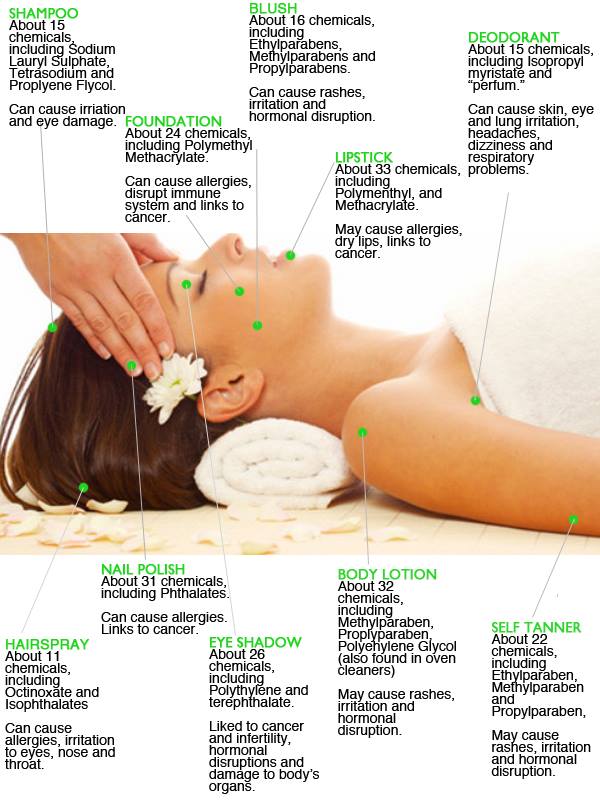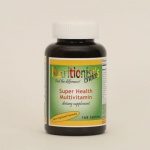Women-Toxins- Hormones & Our Health
We are just beginning to recognize the role toxins play in our country’s high rates of hormone related dysfunctions including: infertility, birth defects, breast cancer, PCOD (polycystic ovary disease) PMS, precocious puberty, endometriosis and obesity.
We love to blame illnesses on our genes, but in reality our genes are only partially to blame. Many of us are born with healthy genes, but over time, as a result of our exposure to toxins–especially when coupled with poor nutrition, our genes & how they express themselves decrease our resilience – making us more prone to illnesses.
What are hormone (endocrine) disrupting chemicals? Turns out certain chemicals found in plastic products such as (BPA), PCBs, phthalates and agricultural pesticides are similar in structure to our own natural sex hormones such as estrogen. When these hormone mimicking substances attach themselves to the cell wall (instead of the body’s own natural hormones) a whole host of dysfunctions take place. According to a report by the Environmental Working Group (EWG): “There is no end to the tricks that endocrine disruptors can play on our bodies: increasing production of certain hormones; decreasing production of others; imitating hormones; turning one hormone into another; interfering with hormone signaling; telling cells to die prematurely; competing with essential nutrients; binding to essential hormones; accumulating in organs that produce hormones.”
How did these wind up in products we use every day? During the last 100 years, in the name of progress, convenience and profit, we created over 87,000 chemicals – & few have ever been tested for their effects on our health (either singularly or in combination). Due to the lack of laws governing manufactures of these chemicals, companies are not held accountable for their safety. It is the public who bears the burden of proving these substances harmful. Additionally, as a result of the lobbying power the chemical industry has in Washington, the damaging impact of many of these chemicals has been hidden from us by both industry and the government. A recent example: in Feb 2016 documents were submitted in a court case showing that for four decades, Johnson and Johnson was aware that “talc” in their BABY POWDER was linked to ovarian cancer! It took the lawyers of a deceased woman’s family (who was awarded 72 million dollars by J & J) for this important fact to be revealed. 1
As we wake up to these facts, it’s easy to become overwhelmed, angry or want to isolate ourselves in a glass bubble. Armed with solutions and a short list of problematic chemicals that specifically target and disrupt our hormones, we can all make better choices:
Plastics & Bisphenol-A: BPA is a chemical added to plastics to increase its fluidity. BPA was first developed as an estrogen receptor medication, but it is found in some baby’s: bottles & sleepwear. It can also be found in furniture, dental sealants, the lining of canned foods, and paper receipts. Besides disrupting our hormones, BPA can cause thyroid dysfunction, neurodevelopmental problems in children, and increase a woman’s risk for miscarriage and breast cancer. The alternative non BPA products do not appear to be any less of a health concern
Solutions: Ditch plastic water bottles & use glass or stainless steel. Limit your contact with cash register receipts. Use your own glass container for take-out food. Avoid microwaving in plastic or having plastic wrap coming in direct contact with food. Replace the plastic PVC shower curtain with a fabric one. Toss the Teflon & avoid purchasing plastic children’s toys (especially ones they put in their mouth). Avoid Urea formaldehyde (a known carcinogen) used in particle board and plywood & Polyurethane foam used in furniture and pillows which can has been linked to lung cancer.
Pesticides: According to the EPA, 3 billion pounds of chemical pesticides are sprayed on our US crops each year. Pesticides come from a family of chemicals called organochlorines and organophosphates. In addition to causing hormonal dysregulation, studies indicate that the risk of a child developing autism appeared to be highest for women who lived near farms, golf courses etc.during the last three months of their pregnancies.(2) Another health concern-in our body’s attempt to protect our vital organs, pesticides are stored in our fat cells making them difficult to get rid of.
Solutions: For a few more dollars added to your grocery budget, buy organic produce, dairy products, free range organic meat etc. If that’s not feasible, check EWG.org & at least avoid the most heavily sprayed food. Join an organic co-op, CSA and purchase from local farmers. Since cotton is heavily sprayed, use organic feminine hygiene products.
Flame Retardants: In addition to increasing the risk for infertility, birth defects, reduced IQ and neuro and developmental problems in children, these have been identified by EWG as one of the 17 “high priority” group of chemicals that should be avoided to reduce breast cancer. They are present in furniture cushions, carpeting, mattresses, electronics and children’s sleepwear & bedding.
Solutions: Since, manufacturers are not required to disclose which chemicals they use to comply with fire safety regulations, opt for organic or green alternatives for bedding, kids toys, sleepwear etc. furniture made from leather, wool & cotton are less likely to contain fire retardants.
Parabens: are a group of chemicals used to inhibit the growth of bacteria, mold and fungus & they raise a woman’s risk for developing cancer, especially breast cancer. In a study published in the Journal of Applied Toxicology, minute amounts of parabens where found in breast tumors from twenty patients. Exposure to these chemicals from an early age may be a factor in why we are seeing a rise in childhood cancers (one of the most rapidly increasing rates of cancer is for children under the age of 13).
Solutions: Since Parabens are found in cosmetics, moisturizers, toothpaste, shampoos, conditioners, nail creams, foundations, antiperspirants and baby lotions & women absorb approximately 5 pounds of chemicals a year from their daily makeup, purchase green & clean, paraben-free products.
Phthalates: These chemicals used as solvents & to make plastics more flexible can induce birth defects & low sperm count. More recent studies indicate they may associated with precocious puberty & impaired testicular function in boys.
Solutions: Phthalates are in vinyl flooring, packaging materials, furniture, deodorants, hair spray, upholstery, mattresses, air fresheners, plastic shower curtains, dryer sheets, shampoo, nail polish, shower gels,& cosmetics. Use alternative flooring & products that are free of these toxic industrial chemicals.
The list of hormone disrupting chemicals could go on to include: Perchlorate (in rocket fuel & explosives that interferes with thyroid function), Mercury (in dental fillings, vaccines & large fish) & many others. However, the solution to reducing our exposure to these toxic substances remains basically the same:
- Eat organic produce or at least food that was grown without any pesticides. Beef & poultry should be raised with healthy feed and free of hormones & antibiotics. Purchase food in glass rather than cans.
- Choose clean & green personal care products: Our skin is our largest & most permeable organ. The FDA reports substances applied to our skin can be found in our cells within 26 seconds! Mineral oil, a cheap filler found in many lotions & cosmetics inhibits our skins ability to release toxins. Products should clearly state they are free of mineral oil, as as well as formaldehyde, parabens, phthalates, talc, triclosan (toothpaste & anti-bacterial soap), BPA. It helps if they are also vegan-certified, organic or non GMO, free of artificial fragrances (one perfume can have up to 200 chemicals) & free of artificial colors.
- Detox and Boost your nutrition: In today’s toxic world, in addition to optimizing your nutrition to enhance the effectiveness of your detox pathways, you also need to exercise, sweat, drink plenty of filtered water, have good bowel movements and do periodic, safe and effective cleanses or detoxification programs.
- Improve Indoor Air Quality: The EPA reports that indoor air contains 2-5 times more contaminants than the air outside. One study from 2009 identified 586 different chemicals in the air of 52 ordinary homes. (3) Open the windows, leave shoes at the entrance, get some house plants (NASA has shown house plants can reduce up to 87% of air toxins in 24 hours.),use only essential oils for scents, paint with VOC paint and use safe & green cleaning & laundry products com & EWG natural cleaning guide provide helpful resources & recipes for homemade laundry & cleaning solutions
- Natural Progesterone: John Lee, MD wrote many books before his death in 2003 discussing “estrogen dominance” caused by hormone disrupting chemicals. His recommendation, in addition to eating healthy & limiting exposure to toxic substances, was to use natural Progesterone creams. To find out more read Dr. John Lee’s Hormone Balance Made Simple or Dr. Deanna Osborn, DO Bioidentical Hormone Handbook
The World Health Organization coproduced a report with the United Nations Environment Program: “State of the Science of Endocrine Disruption Chemicals” suggesting that outright banning of endocrine disrupting chemicals may actually be needed to protect the health of future generations. I don’t think we should wait for government or industry to enact laws that will restrict the production of chemicals that are wreaking havoc on our hormones and our health. As usual, we must do our own research, & demand via our collective purchasing power cleaner, safer products. Our hormones, our health, our future and our kids all depend on the choices we make now!
References:
- http://dandell.com/defective-drug/johnson-johnson-to-pay-72m-in-talcum-powder-related-cancer-case
- Roberts, et al. Maternal residence near agricultural pesticide application and autism spectrum disorder among children in CA central valley. Environmental Health Perspective Oct 2007; 115(20) 1482-1489
- Gale RW et al, Semivolatile organic compounds in residential air along the Arizona – Mexico border.Environmental Science and Technology doi: 10.1021/es803482u.




